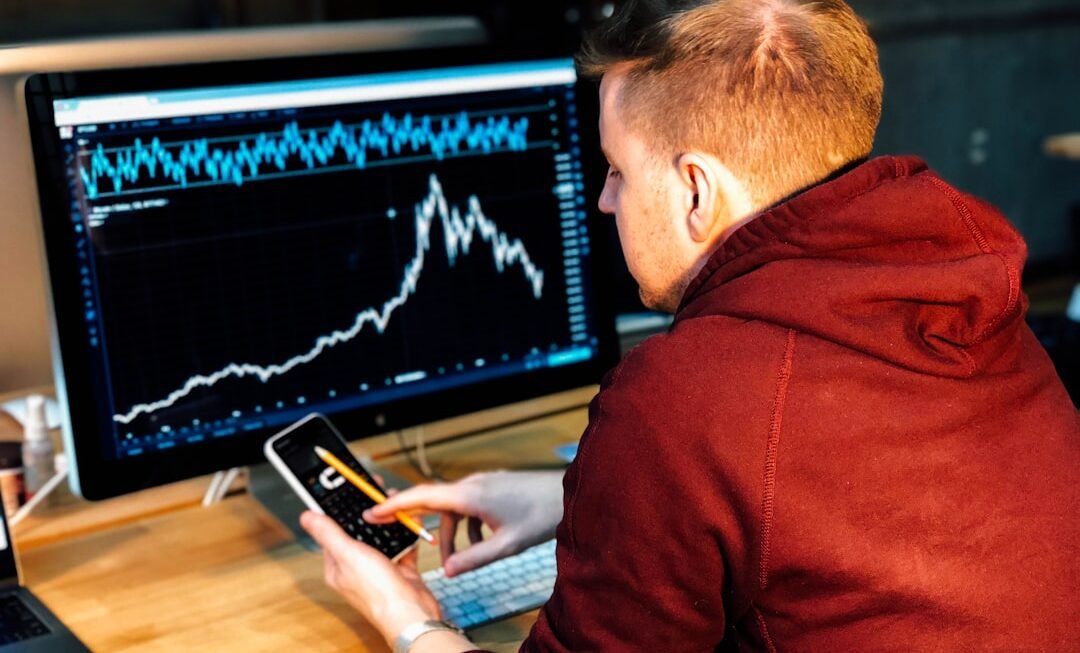The foreign exchange (Forex) market, known for its high liquidity and 24-hour trading cycle, has become a fertile ground for the integration of artificial intelligence (AI) technologies. As traders seek to gain an edge in this fast-paced environment, AI has emerged as a powerful tool that can analyze vast amounts of data, identify patterns, and execute trades with remarkable speed and accuracy. The application of AI in Forex trading encompasses various strategies, including algorithmic trading, predictive analytics, and automated trading systems.
These technologies not only enhance decision-making processes but also help traders manage risks more effectively. AI’s role in Forex trading is multifaceted, ranging from sentiment analysis of market news to the development of sophisticated trading algorithms that can adapt to changing market conditions. By leveraging machine learning techniques, AI systems can continuously improve their performance based on historical data and real-time market feedback.
This capability allows traders to optimize their strategies and respond to market fluctuations with agility. As the Forex market continues to evolve, the integration of AI is expected to play an increasingly significant role in shaping trading practices and outcomes.
Key Takeaways
- AI in Forex trading has revolutionized the way traders analyze data and make decisions, leading to more efficient and accurate trading strategies.
- MetaTrader 4 offers AI features such as Expert Advisors and custom indicators, allowing traders to automate their trading strategies and analyze market trends.
- MetaTrader 5 provides advanced AI capabilities, including a built-in economic calendar and a multi-currency strategy tester, making it a powerful tool for algorithmic trading.
- cTrader offers AI features such as cAlgo, which allows traders to create and backtest custom algorithms, and cMirror, a social trading platform that enables traders to follow and copy the trades of successful traders.
- When comparing AI capabilities, MetaTrader 5 stands out for its advanced features, while MetaTrader 4 and cTrader offer more basic AI tools for traders.
- Advantages of using AI in Forex trading include faster decision-making, reduced emotional trading, and the ability to backtest and optimize trading strategies. However, disadvantages include the potential for technical failures and over-reliance on AI.
- When choosing the right AI platform for Forex trading, traders should consider factors such as their trading style, technical requirements, and the level of AI capabilities offered by each platform.
- The future of AI in Forex trading is expected to continue evolving, with more advanced algorithms, machine learning capabilities, and integration with big data and cloud computing technologies.
MetaTrader 4: AI Features and Capabilities
MetaTrader 4 (MT4) has long been a favorite among Forex traders due to its user-friendly interface and robust functionality. One of the standout features of MT4 is its support for Expert Advisors (EAs), which are automated trading systems that utilize AI algorithms to execute trades based on predefined criteria. Traders can either develop their own EAs using the MQL4 programming language or choose from a vast marketplace of pre-built EAs.
This flexibility allows traders to customize their trading strategies according to their risk tolerance and market outlook. In addition to EAs, MT4 offers advanced charting tools and technical indicators that can be enhanced with AI capabilities. For instance, traders can implement machine learning models to analyze historical price data and identify potential entry and exit points.
The platform’s ability to backtest EAs against historical data enables traders to evaluate the effectiveness of their strategies before deploying them in live markets. Furthermore, MT4’s community-driven environment fosters collaboration among traders, allowing them to share insights and improve their AI-driven trading approaches.
MetaTrader 5: AI Features and Capabilities
MetaTrader 5 (MT5) builds upon the foundation laid by its predecessor, offering enhanced features that cater to the evolving needs of Forex traders. One of the key advancements in MT5 is its support for more complex trading strategies through the use of multi-threaded Expert Advisors. This capability allows traders to run multiple EAs simultaneously, optimizing their trading performance across various currency pairs without compromising speed or efficiency.
The platform also supports a wider range of timeframes and order types, providing traders with greater flexibility in executing their strategies. MT5 further enhances its AI capabilities through advanced analytical tools, including built-in economic calendars and news feeds that can be integrated into trading algorithms. This feature enables traders to incorporate fundamental analysis into their AI-driven strategies, allowing them to react swiftly to economic events that may impact currency prices.
Additionally, MT5’s improved backtesting environment allows for more accurate simulations of trading strategies under different market conditions, enabling traders to refine their approaches based on comprehensive data analysis.
cTrader: AI Features and Capabilities
cTrader has gained popularity among Forex traders for its intuitive interface and advanced trading features. One of the standout aspects of cTrader is its support for cAlgo, a platform that allows traders to create automated trading systems using C# programming language. This flexibility enables developers to build sophisticated algorithms that can leverage AI techniques such as neural networks and genetic algorithms for enhanced decision-making.
The ability to customize trading robots according to specific market conditions makes cTrader a compelling choice for those looking to harness the power of AI in their trading endeavors. Moreover, cTrader offers a unique feature called “cTrader Copy,” which allows traders to replicate the strategies of successful traders in real-time. This social trading aspect can be enhanced with AI by analyzing the performance metrics of top traders and identifying patterns that lead to successful trades.
By leveraging AI-driven insights, less experienced traders can make informed decisions based on the strategies employed by seasoned professionals. Additionally, cTrader’s robust charting tools and technical indicators provide traders with the necessary resources to develop and test their AI-enhanced strategies effectively.
Comparison of AI Capabilities in MetaTrader 4, MetaTrader 5, and cTrader
When comparing the AI capabilities of MetaTrader 4, MetaTrader 5, and cTrader, several key differences emerge that cater to various trader preferences and requirements. MT4 remains a strong contender due to its extensive library of Expert Advisors and user-friendly interface, making it accessible for both novice and experienced traders. However, its limitations in terms of multi-threading and advanced analytical tools may hinder those looking for more sophisticated trading strategies.
In contrast, MT5 offers a more robust framework for algorithmic trading with its support for multi-threaded EAs and enhanced analytical capabilities. The integration of fundamental analysis tools within MT5 allows traders to create more comprehensive trading strategies that consider both technical indicators and economic events. This makes MT5 particularly appealing for those who wish to incorporate a broader range of data into their decision-making processes.
cTrader stands out with its focus on customization through cAlgo and its social trading features via cTrader Copy. The ability to create complex algorithms using C# provides a level of flexibility that may attract more technically inclined traders. Additionally, cTrader’s emphasis on community engagement allows users to share insights and strategies, fostering a collaborative environment that can enhance overall trading performance.
Advantages and Disadvantages of Using AI in Forex Trading
The integration of AI in Forex trading presents numerous advantages that can significantly enhance a trader’s performance. One of the primary benefits is the ability to process vast amounts of data at unprecedented speeds. AI algorithms can analyze historical price movements, economic indicators, and market sentiment in real-time, enabling traders to make informed decisions based on comprehensive data analysis.
This capability reduces the emotional biases that often plague human traders, leading to more disciplined and objective trading practices. However, there are also notable disadvantages associated with relying on AI in Forex trading. One significant concern is the potential for overfitting in algorithmic models, where a strategy performs exceptionally well on historical data but fails to adapt effectively to changing market conditions.
Additionally, while AI can enhance decision-making processes, it cannot predict unforeseen events such as geopolitical crises or natural disasters that may impact currency prices dramatically. Traders must remain vigilant and not solely rely on AI systems without incorporating their own market knowledge and intuition.
Choosing the Right AI Platform for Your Forex Trading Needs
Selecting the appropriate AI platform for Forex trading requires careful consideration of individual trading goals, experience levels, and technical expertise. For beginners or those seeking simplicity, MetaTrader 4 may be an ideal starting point due to its user-friendly interface and extensive library of pre-built Expert Advisors. This platform allows novice traders to experiment with automated trading without needing extensive programming knowledge.
Conversely, more experienced traders who wish to develop complex algorithms may find MetaTrader 5 or cTrader more suitable options. MT5’s advanced analytical tools and multi-threaded capabilities cater well to those looking for sophisticated strategies that incorporate both technical and fundamental analysis. On the other hand, cTrader’s flexibility with C# programming offers a unique opportunity for developers who want complete control over their automated systems.
Ultimately, the choice of platform should align with a trader’s specific needs and preferences while considering factors such as community support, available resources for learning, and the ability to customize strategies effectively.
The Future of AI in Forex Trading
The future of AI in Forex trading appears promising as technological advancements continue to reshape the landscape of financial markets. As machine learning algorithms become increasingly sophisticated, they will likely enhance predictive analytics capabilities, allowing traders to anticipate market movements with greater accuracy. Furthermore, the integration of natural language processing (NLP) could enable AI systems to analyze news articles, social media sentiment, and other qualitative data sources more effectively.
Moreover, as regulatory frameworks evolve to accommodate technological innovations in finance, we may see greater acceptance of AI-driven trading systems within institutional settings. This shift could lead to increased competition among retail traders as they gain access to advanced tools previously reserved for large financial institutions. In conclusion, the ongoing development of AI technologies will undoubtedly continue to influence Forex trading practices.
As traders embrace these innovations, they will need to remain adaptable and open-minded about integrating new tools into their strategies while maintaining a solid understanding of market dynamics.












